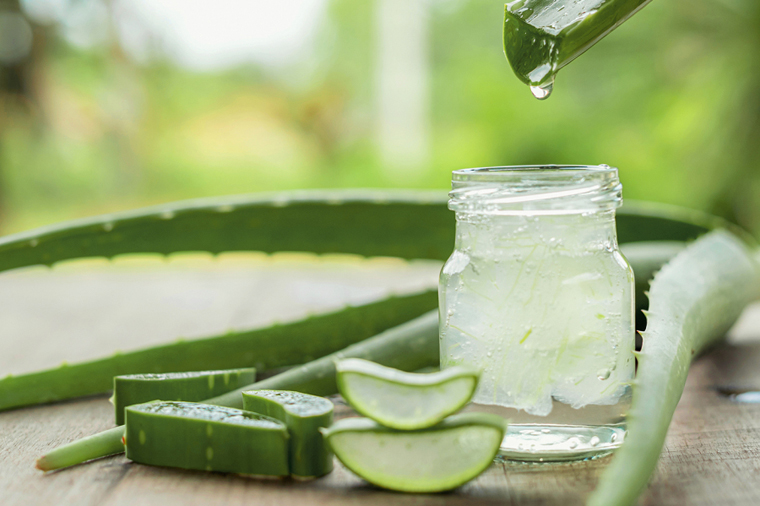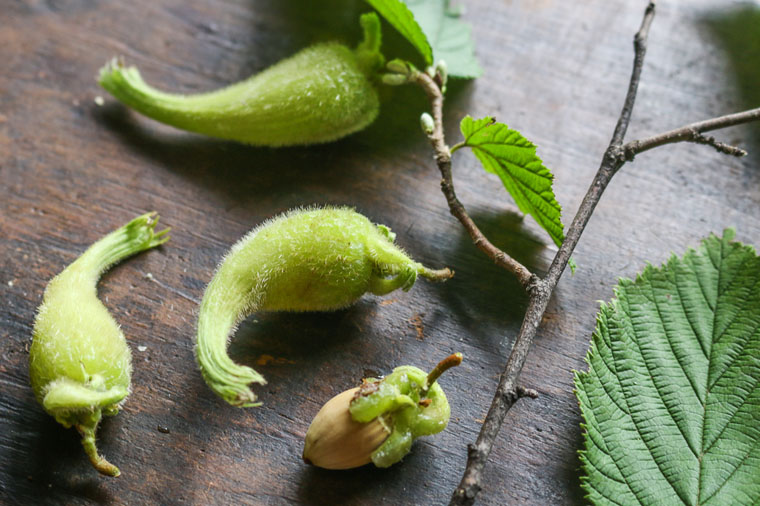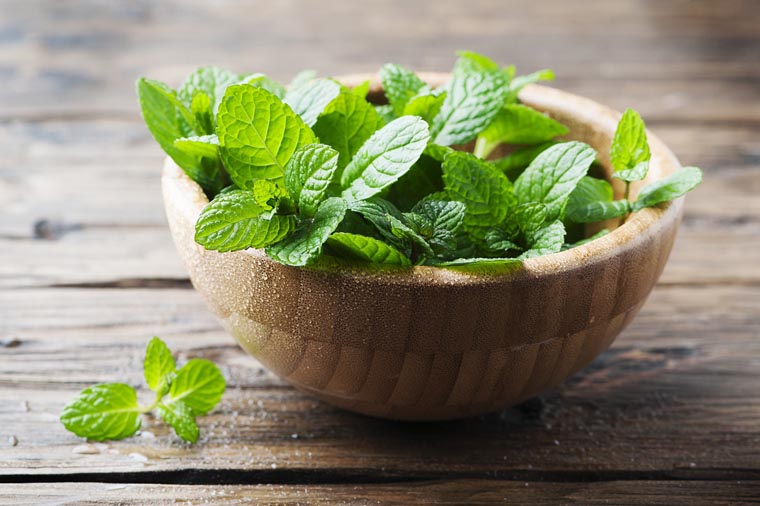Harvesting and Using Aloe Vera
What Makes Aloe Vera so Great?
Aloe vera has been used for more than 6000 years for its wide range of benefits to our internal health and its repairative properties to our skin and hair. Aloe vera contains many vitamins, minerals and micronutrients, such as vitamins A, B1, B2, B3, B6, B9, B12, C, E and PP, as well as iron, calcium, copper, phosphorus, potassium, chromium, magnesium, manganese, selenium, and zinc. It also contains 7 of the 8 essential amino acids and is considered an antioxidant. It acts as a natural anti-inflammatory, an effective antibacterial and antifungal agent, as well as strengthens the immune system. Many regard aloe as a superfood for these reasons.
Which Variety of Aloe Vera to Use
There are over 500 different varieties of aloe vera and they are not all considered safe for consumption or even cosmetically. Before using any aloe plant, be sure to get the correct identification. That said, the two most popular varieties sold in stores are Aloe vera barbadensis and Aloe vera chinensis. These two plants can often get mistaken for each other, so it is best to be aware of their differences.
Aloe vera barbadensis
This variety of aloe is edible and known for improving our internal health. It will usually be found sold as leaves in the produce section of a grocery store or sometimes at specialized markets. Occasionally it can also be found sold as a whole plant at garden centers and plant nurseries. The aloe vera barbadensis variety is a larger variety and has long thick fleshy leaves when fully grown.
Aloe vera chinensis
This variety is more likely to be found at garden centers and plant nurseries, often with the red cross symbol on its tag. Aloe vera chinensis is NOT an edible variety, however it is commonly used for its cosmetic benefits and in treating skin and hair damage. This variety is smaller and marked by small white spots on the leaves.
For the purposes of this blog, we will be sharing our health and beauty recipes for Aloe vera chinensis.
Use Caution with Aloe Vera
As with all plants, it is vital to have the correct plant identification before using any plant in your own recipes, whether they are to be consumed or used externally.
While aloe vera gel is considered safe, it is always best to test a small area of skin or hair before use to make sure an adverse reaction will not occur.
You will also want to avoid including the yellow sap, known as Aloin, in your cosmetic preparations. Aloin is not a toxic substance, however some people do experience skin irritation in response to the yellow sap. The sap tends to ooze from fresh cuts and should allowed to drain before the inner gel is harvested.
How to Harvest Aloe Vera Gel
Harvesting aloe vera gel is a fairly simple process, but can get a bit messy. You will need a small sharp knife that is easy to control with slippery hands.
Step 1 : Choose Which Leaf
It is best to harvest the outer older leaves of aloe, leaving the inner younger leaves time to grow and mature. Choose a healthy looking leaf that is plump with inner gel, located near the base of the plant. Using a sharp paring knife, carefully cut at the base of the leaf, as close to the stalk as possible without damaging the the rest of the plant.
Step 2 : Drain the Aloin
Stand the freshly cut leaf in a jar or glass to help gravity drain the yellow sap from the leaf. Most of the Aloin should drain out during the first 10-15 minutes. If you find your Aloe to have high Aloin content, the inner gel can also be rinsed once harvested.
Step 3 : Cut Off the Spines
Using your sharp paring knife, make two long cuts down the length of the leaf close to the outer spiked edges, also known as the spines. By doing so, the top and bottom rinds of the leaf should be severed.
Step 4 : Remove the Rind
Once the top and bottom rinds are severed, use you paring knife to fillet the top rind away from the inner gel. Try to position your knife as close to the interior of the top rind as possible to minimize the loss of inner gel.
Step 5 : Filet the Gel
Repeat the same process again to fillet the inner gel away from the bottom rind.
Step 6 : Remove Gel Stuck to Rind
Any remaining gel stuck to the interior of the top and bottom rinds can be scraped free using a spoon.
(OPTIONAL EXTRA STEP)
Step 7 : Rinse Gel
If you find you are more sensitive to the Aloin or if your gel has any remaining yellow sap, you can give the gel a gentle rinse in chilled water to wash away any remaining Aloin before using or storing.
That’s it, now it’s ready to use… or store if needed.
How to Store Your Aloe Vera
Storing Cut Leaves
Ideally, if you have an aloe plant, you would only harvest leaves as needed, careful not to over harvest too much at one time. However, if you find yourself needing to purchase aloe leaves from the grocery store or your local market you will need to be careful in how they are stored.
Before storing, be sure to gently wash the exterior of the leaf to remove any impurities. Using a paper towel or clean cloth gently pat dry to remove the majority of the moisture, then allow to air dry fully before storing. This will help to decrease chance of mold or rot.
Aloe vera plants are native to arid climates, so even cut leaves will need to be kept dry. DO NOT keep cut leaves in the refrigerator or in water. The best place to store cut leaves is in a cool, dark, dry, and well ventilated place.
Cut leaves will self heal to retain their moisture, however over time they will gradually dry out and the gel will begin to degrade.
Storing Gel
Harvested aloe vera gel, on the other hand, no longer has its natural protective layer and will immediately start to break down. To store any unused gel it will need to be kept in a small dark airtight container in a cool place to slow the breakdown process. Gel can be kept in the refrigerator for five to seven days.
If you need to store your gel for longer, freeze gel into cubes. Once frozen, they can be transferred to an airtight freezer storage bag and kept in the freezer for up to one year.
Aloe Reparative Body Cream
This easy home preparation is a potent hydrating moisturizer perfect for nurturing damaged and dry skin back to health. Use as a reparative cream on sunburnt skin in the summer or on itchy dry patches in winter. This natural DIY mix can also be used to help relieve stubborn eczema, stretchmarks, or other skin issues in need of extra hydration.
Our Printable PDF
Mix & Match Aloe Facial Mask
Aloe boasts many benefits for your skin and so do many other easily found ingredients. In addition to simple instructions on how to prepare and use an aloe based mask, we’ve compiled a short list of possible add ins, so you can custom tailor a facial mask for your skin’s specific needs.
Our Printable PDF
Aloe Leave-In Conditioner
Sometimes our usual shampoo and conditioning routine is not enough, especially if we experience environmental damage due to excessive sun, heat, harsh chemicals, or drying air. An aloe based leave-in conditioner can help protect your hair from further damage by keeping it better hydrated.
Our Printable PDF
Aloe, Coconut & Honey Hair Mask
This easy peasy 3 ingredient hair mask is so simple to whip up when your hair and scalp are in need of a little extra nourishment. While the honey helps to hydrate your hair and the coconut oil fortifies with its fatty acids, protein and vitamins A and E, the aloe will soothe your scalp and provide extra protein to your hair.
 |
| 



